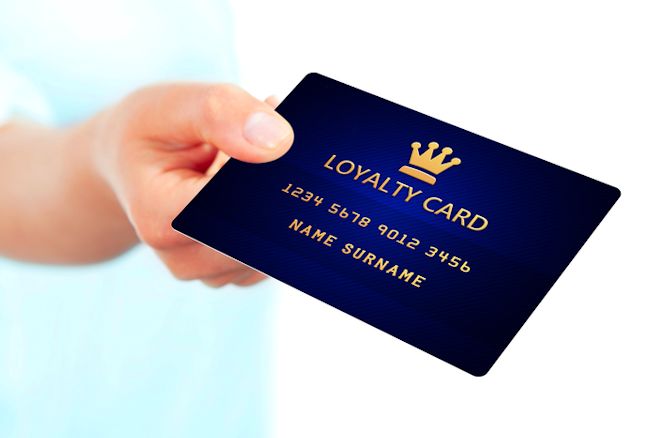
By Larry Mogelonsky, MBA, P. Eng. (www.hotelmogel.com)
An old school sales technique that today is considered somewhat exploitative and sleazy may in fact help you shed some light on how to improve your loyalty program. Hot button selling was a colloquial term to describe first the process of qualifying your leads in order to decipher the emotional motivations underpinning their logic-based decisions, and then second using this information to pressure and coerce these leads into closing the sale on the spot.
From a psychology standpoint, the proliferation of this technique makes sense because of how often we humans are slaves to our emotional states of mind. When it comes to purchases, we habitually complete translations based upon our own internal ‘hot buttons’ then back-rationalize these decisions into features and benefits – that is, the logical aspects of traditional sales training.
For instance, a woman joins a gym not to be healthier (logic) but because she wants to look drop dead gorgeous in her wedding dress (emotion). As another, a millennial buys a certain Japanese model as his first car not because it was lauded in Consumer Report for its gas efficiency and safety rating (logic), but because he saw his favorite actor driving one in the most recent Fast & Furious movie (emotion). To touch on a personal example, a marketing executive buys the newest Macbook Pro, not because he needs all that extra speed to load Microsoft Word or Outlook a few milliseconds faster, but because he has been locked in a game of technological one-upmanship with his cousin for the past three decades.
For all of the abovementioned cases, if a salesperson knows these underlying purchase drivers, he or she can subtly or overtly rephrase the pitch for maximum returns. While I would like to believe that we’ve moved past these antiquated methods (or maybe only given them a more innocuous name), playing upon one’s emotions is a component that’s sorely overlooked in today’s hotel loyalty programs. Perhaps we can take the constructive aspects of hot button selling while leaving out the unscrupulous.
Transactional Pseudo-Loyalty
Today’s loyalty programs are almost purely transactional. You give away your name, email and perhaps your home or mailing address, and in return you get basic perks such as free WiFi, complimentary breakfasts, extra drinks at the lobby bar, members’ only room rates or shuttle service to the airport. While these are all great features of a contemporary loyalty program, there are three grievous errors that have been overlooked.
First, if it’s a quick sign up process, then your loyalty program won’t linger in someone’s mind long enough for it to stick. Membership becomes akin to a convenience store; it’s there only when it serves the immediate needs of the customer, but said customers won’t go out of their way to stay loyal to any one store in particular.
Second, these perks are all but perfunctory nowadays. Everyone is offering them and as such you aren’t differentiating your loyalty program from the others out there. This in itself contributes to brand apathy and agnosticism – doubly true for special rates whereby consumers will only join to obtain this rate – when instead you should be using your loyalty program to offer benefits to your guests that they cannot help with any other brand or hotel.
This belies the third point in that loyalty programs are too easy to join without any prequalification or introductory brand education. After all, you can’t discover customers’ hot buttons without first getting to know them.
Prequalification
Think of all the times you’ve been funneled through a hotel’s booking engine and the prompt to join the loyalty program is nothing more than a basic form at the bottom of a colorless web page. Not only are there no exciting visuals to elicit an emotional reaction, but the brand remains oblivious to that person’s individual tastes and preferences.
With the power of Big Data, computers these days can perform such amazing feats to infer future customer behavior from answers to even the most basic of multiple choice questionnaires, and yet we aren’t making our new guests go through these rudimentary hoops in order to gain access to a myriad of benefits. Without any sense of prequalification, we are transforming travelers into mercenaries, always on the prowl for the best numerical value with little to no emotional attachment.
I’m not suggesting that we exclude certain guests from joining our loyalty programs, only that we require an ounce more of engagement on their part before induction. So include your member signup at the bottom of the booking direct page, but be sure to also throw in a “Before you join, take a minute to learn about all the things that make us great” segue.
That, or you can be more audacious by adding a graphic with the header that reads, “Tell us about yourself” or “We don’t just let anyone into our loyalty program,” and then have people input a few of their own preferences to build some initial rapport. Some interesting questions to this effect may include what they already like about your brand, whether they prefer shopping online or calling the hotel to speak with a reservation agent or even which occasions and features might entice them to opt for a room upgrade.
In this sense, yes, you are excluding guests, but only those who aren’t willing to go the extra inch to tell you a little bit more about what makes them tick. This in itself is a qualifier as those guests who are intrinsically brand disloyal and very likely to not give you repeat business are the ones who want go through this harmless extra step.
Loyalty Programs as Brand Education
These additional steps represent a fine balance whereby you don’t want the process to be lengthy to the point that it terminates the sales funnel. But when done right, you can educate potential customers to make them at the very least ‘brand conscious’ as well as give them reasons beyond price to select your property over others.
Key here is to make this brand education and member induction process visually stimulating. It’s less a list of features that includes ‘free internet access’ as a top bullet point and more a slideshow that shows a happy guest relaxing in the lobby while streaming a video of his or her phone. While you may not touch upon each individual’s hot button, you are certainly getting closer by prompting customers to discover more about your brand before you automatically sign them up for your loyalty program.
In other words, don’t give it away, make guests ‘earn it’, because if people doesn’t feel like they have earned something then they definitely will not bother to learn more about it. While this represents the beginning of the process, once you have that opening hook, subsequent e-blasts, offers and questionnaires will then stand a better chance towards building true brand advocacy and giving you the necessary data to better cater to your guests’ emotional hot buttons.
This article may not be reproduced without the expressed permission of the author.
Editor’s note: To discuss business challenges or to discuss speaking engagements please contact Larry directly.


